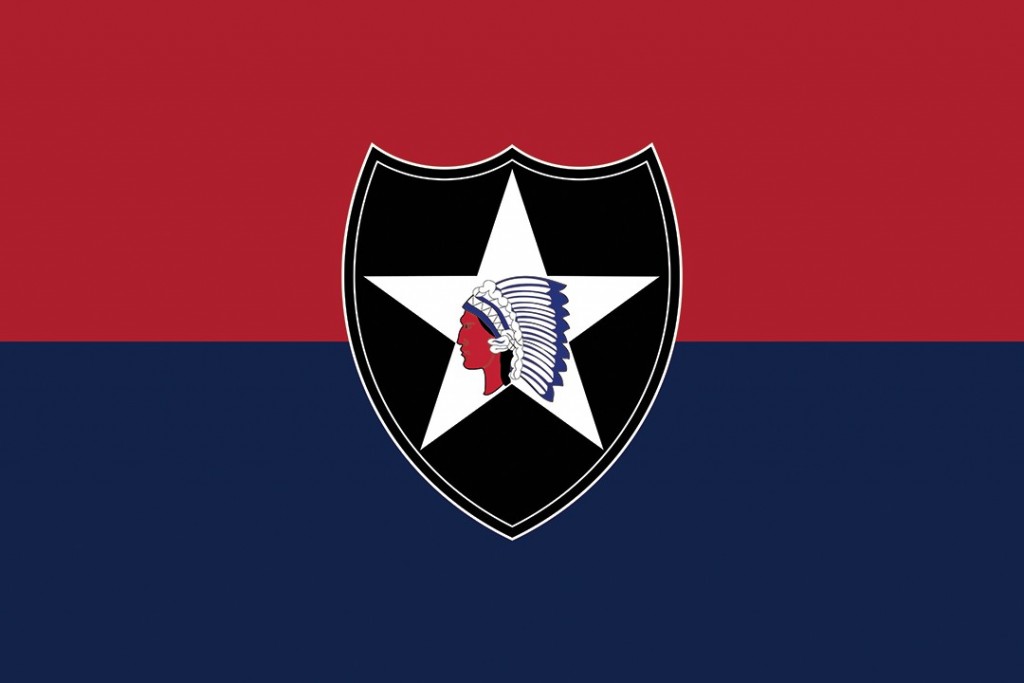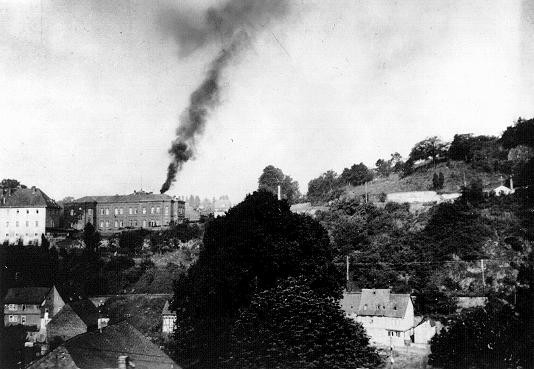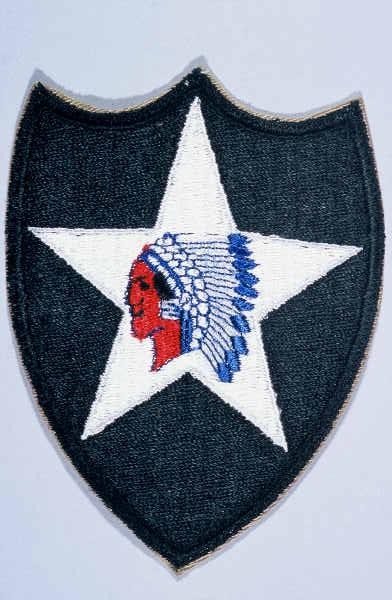
The 2nd Infantry Division during World War II
In 1985, the United States Holocaust Memorial Museum and the US Army Center of Military History began a program to honor US Army divisions that took part in the Allied liberation of Nazi camps. The US Army Center of Military History defines a liberating division as one whose official records show its presence at a camp within 48 hours of the first soldier’s arrival. The 2nd Infantry Division is among the 36 US divisions that have been recognized to date.
Key Facts
-
1
US, British, Soviet, and Canadian troops encountered concentration camps and other sites of Nazi crimes as they advanced across Europe in 1944 and 1945.
-
2
The Allied soldiers liberated sick and starving camp prisoners from Nazi tyranny. They also provided them with food, clothing, and medical aid.
-
3
The United States Holocaust Memorial Museum and the US Army Center of Military History have recognized 36 US divisions for their role in the liberation of Nazi camps.
2nd Infantry Division During World War I
The 2nd Infantry Division (nicknamed “the Indianhead Division”) formed in 1917, after the United States entered World War I. As part of the Allied Expeditionary Forces, it fought against the German Army in France between November 1917 and November 1918. After the war, the division occupied cities in the Rhineland before returning to the United States in August 1919.
2nd Infantry Division Campaigns During World War II
The United States military reorganized the “Indianhead" division in October 1940. On June 7, 1944, one day after the initial D-Day invasion, the 2nd Infantry landed on the Normandy beaches of France as part of the Allied invasion of western Europe. The division participated in the fight to break out of Normandy. It captured the city of Brest, France, in September 1944. Then, it moved into Belgium. During the Battle of the Bulge in December 1944, the 2nd Infantry Division countered the German assault. In March 1945, the division crossed the Rhine and moved into central Germany. It captured the German city of Leipzig on April 19, 1945. When the war in Europe ended on May 8, 1945, the 2nd Infantry Division occupied the city of Plzen (Pilsen) in present-day Czech Republic.
Uncovering Sites of Nazi Crimes
As the 2nd Infantry Division crossed Germany, it discovered several sites of Nazi crimes. One of these sites was in the German town of Hadamar. The others were Leipzig-Schönefeld (a subcamp of the Buchenwald concentration camp) and Spergau (a “labor education camp”).
The 2nd Infantry Division at Hadamar
On March 26, 1945, troops of the 2nd Infantry Division entered Hadamar. Local residents quickly reported that thousands had been murdered in a mental health facility above the town. Captain Alton H. Jung of San Antonio, Texas decided to investigate. American officials first inspected the Hadamar facility on March 29, 1945. The investigators included Major Harvey Coverly of Sausalito, California; Lieutenant W. R. Johnson of Loveland, Colorado; and Captain Brinkley Hamilton, a British officer and former detective.

At the time of its liberation, Hadamar housed around 550 patients. Only a handful of hospital staff tended to the patients. A search of the complex uncovered 481 mass graves in its cemetery. The search also found the facility’s death register hidden in the wine cellar. This register contained the names of Hadamar victims.
Captain Jung alerted the United States War Crimes Branch in Paris. In the following weeks, an investigation found that Hadamar had been a site of the Nazi Euthanasia Program. Since 1941, doctors and nurses had murdered 15,000 patients with disabilities there.
The Liberation of Leipzig-Schönefeld and Spergau/Zöschen
On April 14, 1945, the 2nd Infantry Division overran Leipzig-Schönefeld, a subcamp of the Buchenwald concentration camp.
Prisoners of the camp were forced to work for the Hugo Schneider AG (Hasag) firm. Hasag was one of the largest armaments firms in Germany. The SS had permitted Hasag to establish an ammunition factory for the German military in June 1944. It quickly became the largest Buchenwald subcamp for women. The camp later included a smaller, separate set of barracks to house about 700 male inmates.
By March 28, 1945, Schönefeld housed some 4,765 female prisoners. However, at the beginning of April, the SS evacuated many of the inmates to prevent them from falling into Allied hands. According to the 2nd's report, the SS also killed between 400 and 600 prisoners from December 1944 to April 1945. By the time the 2nd arrived at the camp, only around 250 prisoners remained in the camp.
The 2nd Infantry Division arranged for proper burials of the dead at the camp. They also collected evidence to prosecute the SS personnel.
Around April 15, 1945, the 2nd Infantry Division liberated about one thousand prisoners held in the Spergau (Zöschen) Labor Education Camp (Arbeitserziehungslager Spergau). The US soldiers interviewed prisoners and interrogated captured SS guards. These reports helped them uncover conditions in the camp, identify and locate perpetrators, and gather evidence for war crimes trials.
Recognition as a Liberating Division
The 2nd Infantry Division was recognized as a liberating division by the US Army's Center of Military History and the United States Holocaust Memorial Museum in 1993.
2nd Infantry Division Battle Casualty Figures
Hundreds of thousands of US servicemen and women died or were wounded in the fight against Nazi tyranny.
The total number of battle casualties for the 2nd Infantry Division in the European Theater of Operations during World War II was 16,795. In this case, “battle casualties” includes all personnel who were unable to fight in battle because they were wounded, missing, captured, or killed.
Among the battle casualties suffered by the 2nd Infantry Division, there were 3,512 deaths.
2nd Infantry Division Nickname and Insignia
The nickname of the 2nd Infantry Division, “Indianhead,” came from its World War I insignia. An officer and two non-commissioned officers (NCOs) designed the insignia for a competition in March 1918. The 2nd’s insignia is in the shape of a shield. It shows the profile of a Native American warrior against a white, five-point star on a black background. A silver thread outlines the shield.

Footnotes
-
Footnote reference1.
In the aftermath of World War II, the US Department of the Army compiled casualty figures for US Army personnel. The US government published these figures in 1953. The report listed casualty numbers for the US Army for the period from December 7, 1941 (Pearl Harbor) through December 31, 1946, when US President Harry S. Truman officially declared the end of war hostilities. Army Battle Casualties and Nonbattle Deaths: Final Report, 7 December 1941-31 December 1946, Prepared by the Statistical and Accounting Branch, Office of the Adjutant General, Under the Direction of the Program Review and Analysis, Division of the Comptroller of the Army, O.C.S., (Washington: Department of the Army, 1953), p. 3-4, 84-89.
Critical Thinking Questions
What challenges did Allied forces face when they encountered the camps and sites of other atrocities?
What challenges faced survivors of the Holocaust upon liberation?

